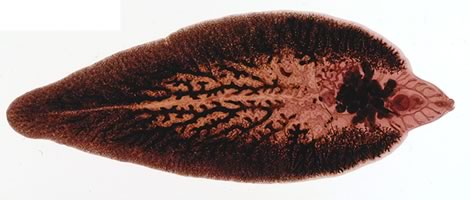Fluke in cattle is expected to be a risk earlier this summer following the wet winter. This makes a mid-summer treatment vital to prevent significant losses.
Farmers who resorted to grazing cattle earlier this year because of a forage shortage could see an even earlier risk. This is because the mud snail, which is the fluke’s intermediate host, will have thrived in the damp and wet conditions, despite the brief cold snap seen at the start of 2018.
There will be a build-up of infective metacercariae on many pastures, which develop into immature fluke when ingested.
Additionally, if cattle were not turned out of housing clean of fluke, they will have added to the pasture burden.
All of the above means cattle in risk areas may need a mid-summer treatment to prevent costly losses, says Zoetis vet Dr Dave Armstrong.
“It is important to remember that both immature and adult fluke cause production loss, therefore, waiting to treat is counterproductive if you have fluke on your farm.”
Production losses
Fluke infected cattle can take 80 days longer to reach slaughter weight, costing between £25-35 extra per head, according to AHDB figures.
Studies have also showed fluke to cause reduced reproductive performance in bulls, reduced conception rates in herds, increased age to first oestrus of 39-days and, in adults, an increased calving interval of 4.7 days on affected farms.
Dr Armstrong adds: “Because a cow’s liver is bigger, they can tolerate a greater fluke burden meaning you won’t see sudden deaths like you would in sheep. However, you will see subclinical disease, which can be costly” he says.
Treatment options
When selecting treatment options mid-season, farmers need to consider the age of the fluke they are treating for.
Many fluke treatments focus on killing egg-laying adults, resultantly, most immature fluke will still be present, these will continue to cause damage as they migrate through the liver. These will then go on to develop into adult fluke.
However, a dual-purpose product containing moxidectin and triclabendazole has been found to be 90% effective against early immatures, 99.5% against late immatures and 99.9% against adults. This is compared to products containing closantel, which only killed 26.8% of early immatures, 90% of late immatures and 99.3% of adults.
Dr Armstrong adds: “Your advisor will be able to give you the best advice of which products to use, depending on your farm’s situation.”
Signs
Chronic fluke is caused by adult fluke in the bile ducts (up to 500). Each fluke can consume 0.5ml of blood every day. Signs of chronic fluke include:
- Loss of condition
- Bottle jaw
- Reduced fertility
- Livers trimmed or condemned at abattoir
- Anaemia
- Terminal diarrhoea
Monitor burdens
Farmers need to be aware of what is happening on their farm, says Dr Armstrong.
“Although faecal egg tests will pick up fluke that are 12 weeks old, it won’t pick up immature fluke, which can cause acute disease and sudden death.
Copro-antigen testing will pick up fluke from about six weeks old meaning that a negative test doesn’t discount the presence of fluke under six weeks of age.”
Dr Armstrong recommends using testing along with other resources, such as abattoir feedback, and general stock health to make a decision on treatment.
Farmers can also monitor fluke levels, that will impact both cattle and sheep, r area by clicking on an interactive map found at www.parasitewatch.co.uk.




